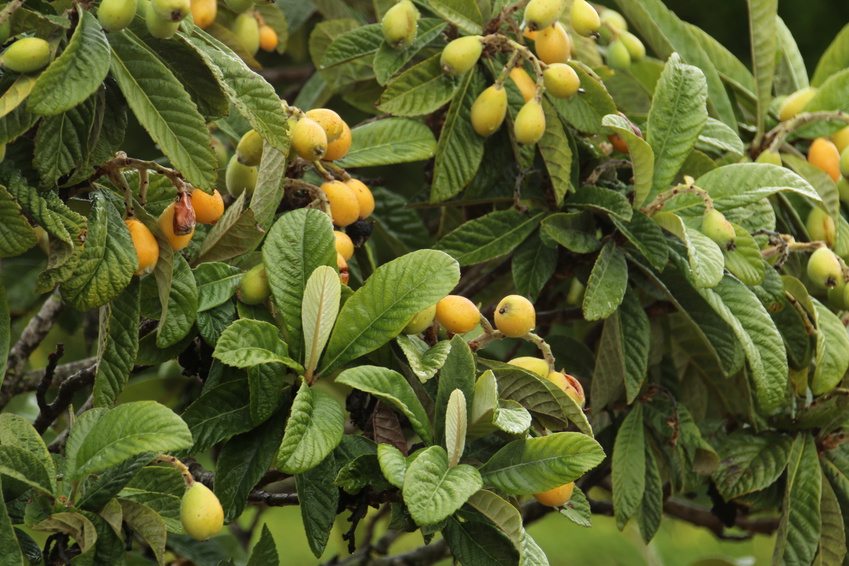
Loquat (Eriobotrya Japonica), also known as Japanese plum, or nispero, is a really tasty fruit whose leaves have significant antihistamine, mast cell stabilising, and anti-inflammatory properties. Here’s where to find it, and how you might make use of it. Please remember even antihistamine foods can cause problems…
LOQUAT AS AN ANTIHISTAMINE FOOD
I grew up plucking nisperos straight from the trees in Spain. They’re unlike any fruit I’ve ever tasted: sweet, with a bit of sour, a lovely texture, but enormous pips. What a treat to find that the leaves of one of my favourite fruits prevents white blood cells called mast cells from releasing inflammation into the blood stream. Loquat leaves inhibit TNf-a, IL-6 and IL-8, which are all involved in the inflammatory process. Remember, inflammation release, when needed because we’re sick with an infection, or healing from surgery, is a wonderful thing. Inflammation because mast cells are inappropriately triggered by allergies, histamine in foods, or stress, however, is not something we want. Because mast cells also contain histamine, we want to make sure they remain as stable as possible, so we’re not adding more histamine to the equation.
One way loquat works as an antihistamine is thanks to its abundant antioxidants. Read more about how antioxidants naturally found in foods act as antihistamines here. Loquat was also found to inhibit anaphylaxis in animal studies. Never, ever try this at home – I include this only as a clue to its antihistamine properties rather than as something to be tried. We’re all different and animal studies frequently don’t translate to humans.
LOQUAT RESEARCH
- Improves liver function
- Improves lung function
- Protects the kidneys by increasing glutathione (an antioxidant found in broccoli)
- May be beneficial in treating obesity and high blood sugar
- Reduces memory impairment
 HOW TO USE LOQUAT
HOW TO USE LOQUAT
My preference is always to go for the whole fruit, or in this case, the leaf. Loquats make an excellent jam or chutney. In the latter case they just need a little apple pectin and x2 tbsp coconut sugar or date syrup, or you could add a little apple cider vinegar and a bit of something sweet to make the chutney.
Please make sure to thoroughly check the side effects and interactions of loquat.
Just because it’s natural, doesn’t mean it’s safe.
WHERE TO FIND LOQUAT
There’s not much by way of organic loquat leaves/tea online, so I’ve ordered an organically raised tree. I plan to make tea from the leaves and eat the fruit.
You’ll find recipes using ingredients like this in my books Anti-Recipes and The Anti-Cookbook
—– REFERENCES —–
“Glutathione.” Wikipedia, Wikimedia Foundation, 25 Aug. 2017, en.wikipedia.org/wiki/Glutathione. Accessed 26 Aug. 2017.
“Loquat.” Wikipedia, Wikimedia Foundation, 14 Aug. 2017, en.wikipedia.org/wiki/Loquat#Culinary_use. Accessed 26 Aug. 2017
Liu, Yilong, et al. “Biological Activities of Extracts from Loquat (Eriobotrya japonica Lindl.): A Review.” International Journal of Molecular Sciences, MDPI, Dec. 2016, www.ncbi.nlm.nih.gov/pmc/articles/PMC5187783/. Accessed 26 Aug. 2017.













